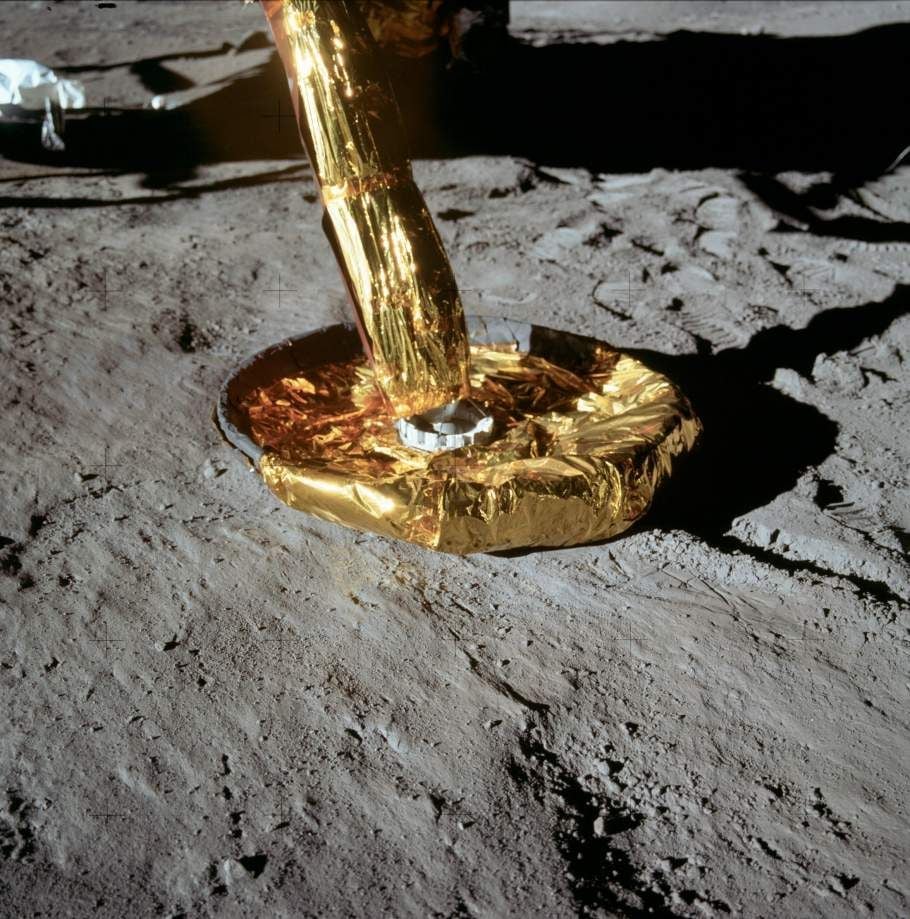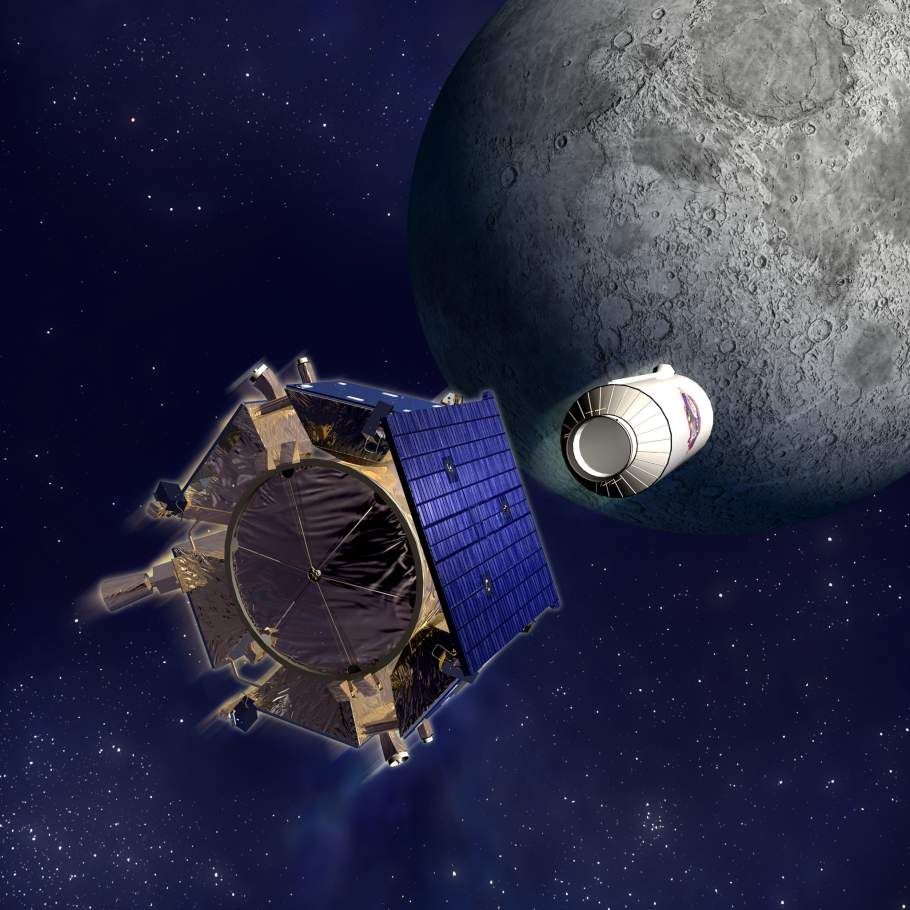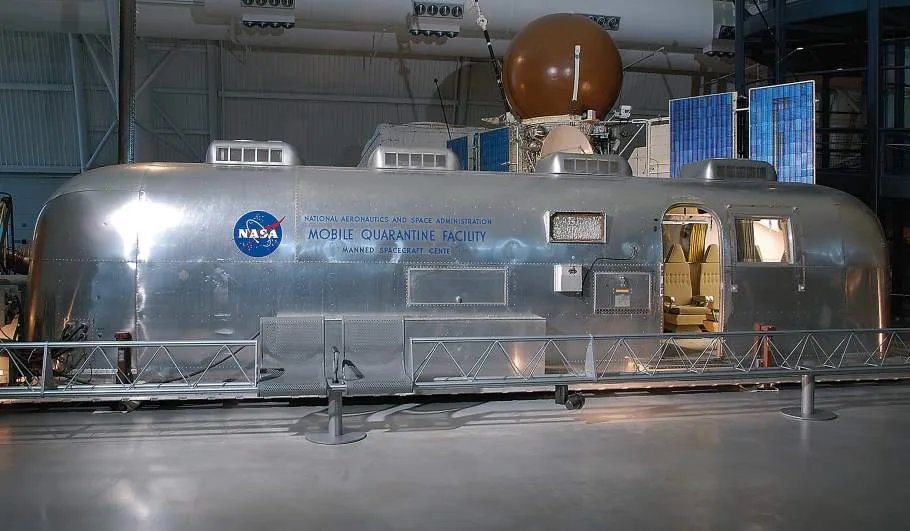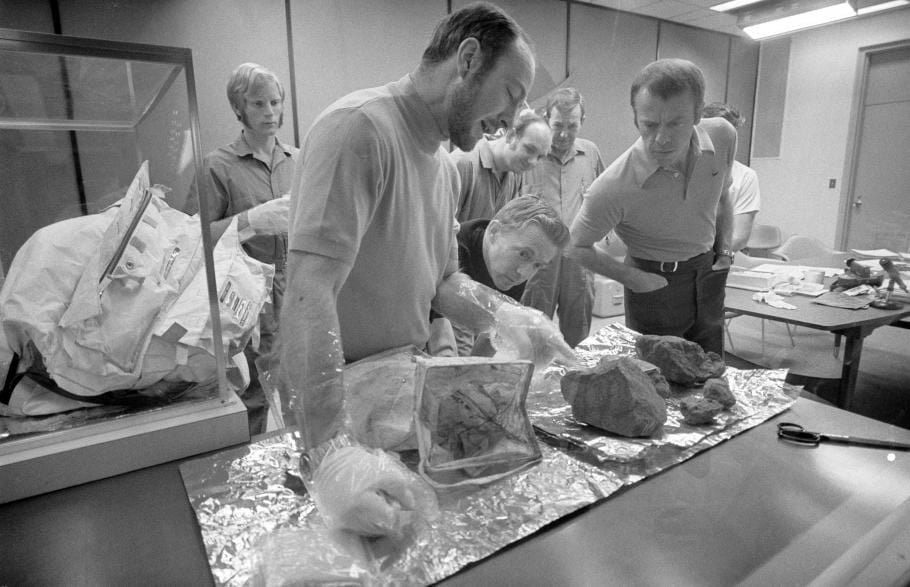The Moon: Before We Knew
Reading Mark Wick’s novel To Mars Via the Moon words motivated reflection on how our thinking of the Moon changed as real-life science and technology has evolved, in contrast to science ficton.
:focal(500x375:501x376)/https://tf-cmsv2-smithsonianmag-media.s3.amazonaws.com/blogging/featured/Moon.jpg)
Voyages to Mars from the museum’s AirSpace Podcast is a mini-series to accompany NASA’s Perseverance rover on its journey from Earth to Mars. On the most recent installment of this literary mixtape, I read selections from Mark Wick’s novel To Mars Via the Moon.
As someone who very much enjoys the moons of other planets, I have been really excited to begin studying Earth’s Moon. In the last year or two I have added our Moon to my collection of solar system bodies that I study (I’ve spent most of my career looking at the moons of the largest planets in our solar system). Reading Wick’s words motivated me to reflect on how our thinking of the Moon has changed as real-life science and technology has evolved (as opposed to Wick’s sci-fi brainstorms).
So, what were scientists still wondering about before we started sending spacecraft (and humans) to explore our nearest neighbor? I pose (and answer) a few questions that were considered as NASA prepared to send astronauts to the Moon.
Is the Moon fluffy?
The Moon wasn’t understood as well as we might have hoped as NASA moved towards the (safe) arrival of Apollo 11. Of course, much planning had gone into the missions that led up to the first landing, including the development of detailed maps and other research tools.
We understood that many of the circular surface features were impact craters, but a concern remained: couldn’t billions of years of bombardment by meteorites lead to a surface that was just dirty fluffy impact ejecta threatening to swallow up an astronaut?

Take a look at the large saucer shaped feet of the Lunar Exploration Module: all that extra surface area was designed to give extra stability in case the terrain was fluffier than hoped (you know, like lightning sand in the Princess Bride?). Scientists didn’t really expect the lunar surface to be like lightning sand, but they wanted to be prepared. So, while the lunar surface is covered with what we call regolith (a sometimes inches-thick, fluffy layer of loose material) none of it was deep enough to do more than capture iconic boot-prints and cling to spacesuits. [Listen to part 1 of the AirSpace Podcast Walking on the Moon to hear more about the ‘fluffy moon’].
Is there water on the Moon?
This is kind of a yes, then no, then yes-kind-of. (The joys of science!) Many of the broad dark areas you see on the Moon are called “mare/maria” which translates to ocean. Early astronomers thought that these dark, smooth looking regions resembled oceans on Earth. When technology advanced enough to see rilles (a fissure or narrow channel) meander across the surface like rivers or streams, many questioned whether water flowed on the lunar surface at some point. This, of course turned out not to be the case. Features like sinuous rilles are much more easily explained by the presence of lava flowing on the surface or through lava tubes.

But what about ice? In 2009, the LCROSS mission (Lunar CRater Observation and Sensing Satellite), as part of the Lunar Reconnaissance Orbiter mission, sent part of its rocket (the Atlas V’s Centaur upper stage) crashing into the south pole of the Moon. The Moon’s south pole has some spots that are permanently shadowed, and scientists thought that if there was any water on the Moon, it was most likely to be lurking in these permanently shadowed regions. By creating a fresh impact crater using the Centaur upper stage, the Lunar Reconnaissance Orbiter could observe the composition of the material blasted by the impact. LCROSS found water ice on the moon! So, is there water on the Moon? Yes, but not liquid, and it never flowed.
Is there life on the Moon?
Knowing so little about the Moon before Apollo, there was a fear that if there was some kind of microbial life on the Moon, it could be brought back to Earth by the astronauts and/or the lunar samples they collected. When Apollo 11 returned, the astronauts were held in a specially outfitted Mobile Quarantine Facility (a converted Airstream trailer) while they were transferred to the longer-term quarantine facility at the Lunar Receiving Laboratory in Houston, Texas. After Apollo 14, NASA felt confident in saying that there were no lunar microbes, and Apollo astronauts returning home did not have to go through a long post-flight quarantine. Astronauts today still quarantine, but before their mission (not after) and only to ensure that astronauts don’t get sick in space. The lunar samples returned by Apollo astronauts are still carefully quarantined to protect all those great rocks from being contaminated. [Listen to our episode Mask, Gloves, Soap, Scrubs to hear more].

How did the Moon form?
Until the Apollo missions, we really couldn’t prove how the Moon formed. Leading up to Apollo, there were three popular ideas about where the Moon came from:
- The Moon formed at the same time as the Earth out of the same cloud of stuff.
- The Moon passed too closely to Earth and could not escape Earth’s gravitational pull so was captured into Earth’s orbit.
- Early in Earth’s history, an object about the size of Mars smashed into Earth creating a bunch of debris. Some of that debris coalesced into the Moon and the rest re-formed into the Earth.

The lunar samples that came home with the Apollo missions showed that the Moon and Earth were made up of the same kinds of minerals, but the amount of those minerals on the Moon were slightly different than on Earth. These results proved that a giant impact (theory 3) into our early Earth is what formed our Moon, but the details of exactly how that all worked is still a hot topic in lunar science. [Listen to Part 2 of Walking on the Moon to hear more about lunar samples].
